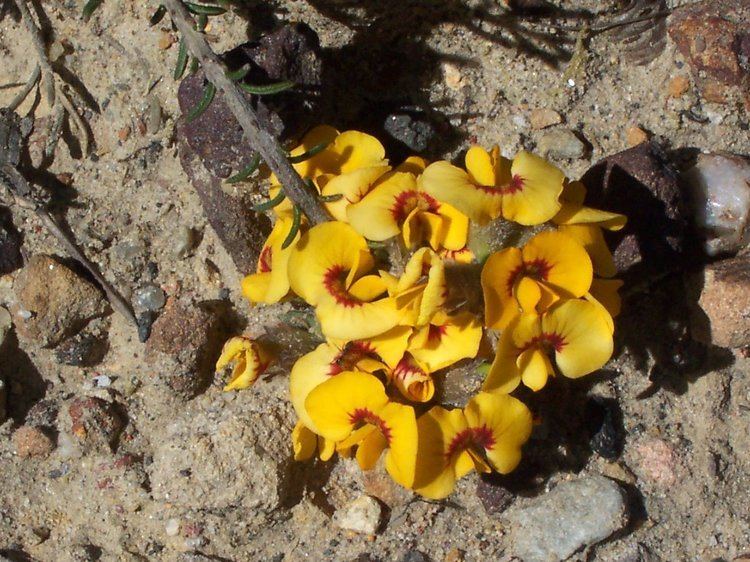Rank Species | ||
 | ||
Mirbelia baueri is a low shrub, between 20 and 50 cm tall. Sometimes seen in the form of mats on the heathland floor. Typical of many of the Australian pea plants, yellow and red flowers form in late winter or spring. Flowers are 10 to 12 mm long, forming from the leaf axils near the end of the branches. Leaves are thin, rigid and pointed, around 15 mm long. The fruit pod is somewhat round in shape, around 6 mm long, with a beak shaped point.
The habitat is the higher altitude heathlands in rocky areas, or on exposed sandy soils of poor fertility. Often in areas of relatively high rainfall. Growing from the Blue Mountains in the central eastern part of New South Wales, to Nerriga in the south coast region. It may be seen in areas such as Katoomba and Mongarlowe.
Bauer's Merbelia is listed in some references as a common name. Though this plant is casually remarked by bushwalkers as one of the egg & bacon group of wildflowers.
In 1938, William Blakely named this plant Mirbelia jeanae and wrote "Named in honour of Miss Jean Buckingham, junior member of the Australian Naturalists' Society of New South Wales, who discovered this very pretty species on a rocky sandstone plateau in Gold Gully, 2 miles south-east of Penrose railway station, October 2, 1938.
However, it first appeared in scientific literature in 1837, authored by the prominent English botanist George Bentham.
